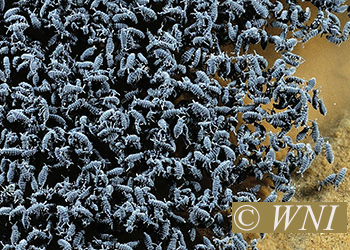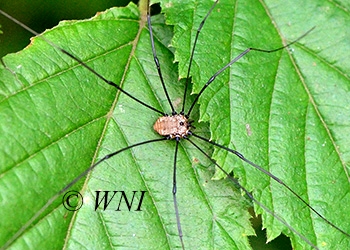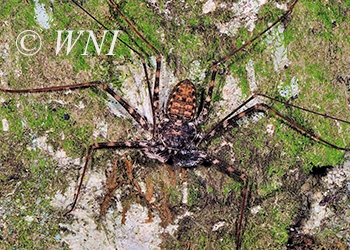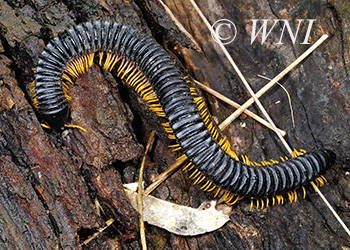| Terrestrial Invertebrates |
Over 95% of the described animal species are invertebrates. "Invertebrates" are not a taxon, but a grouping of convenience, which simply signifies that these animals are not vertebrates, i.e., they lack a skeleton of bone, either internal or external. However, many invertebrates have hard exoskeletons or outer shells (e.g., insects, arachnids, crustaceans, echinoderms, molluscs, and corals), or hydrostatic or fluid-filled skeletons (e.g., jellyfishes, leeches, etc.).
There are probably at least 1,305,000 known species of invertebrates, although it may be as many as 10,000,000. Of these, nearly 60% are Insects, with over 1,000,000 recognized species (but perhaps 2,000,000, or even 7,800,000 species). Other species rich groups include Arachnids (102,300 species), Mollusks (85,000), Crustaceans (47,000), Cnidarians (10,000), Sponges (9,000), and Echinoderms (7,000).
On this website, invertebrates are split three ways, for convenience; ours and the site users. Insects, as the most diverse group of animals on the planet, are treated separately. The remaining invertebrates are divided into “terrestrial” (this page) and “marine”, but note that the latter includes freshwater organisms. Although some invertebrate phyla are either aquatic or land-dwelling, others, such as Arthropoda and Mollusca, inhabit both dry land and water.
| Entognatha | ||
 |
Springtails (Collembola) | |
| Chelicerata | ||
| Spiders (Arachnida) | ||
 |
Harvestmen (Opiliones) | |
| Pseudoscorpions (Pseudoscorpiones) | ||
| Scorpions (Scorpiones) | ||
 |
Whip Spiders (Amblypygi) | |
| Myriapoda | ||
| Centipedes (Chilopoda) | ||
 |
Millipedes (Diplopoda) | |
| Mollusca | ||
| Land Snails and Slugs (Gastropoda) |
||
| Unauthorized use of our images is NOT permitted. | ||
| Hotlinking or "pinning" of our images to websites is STRICTLY PROHIBITED. | ||
| Copyright © Michael Patrikeev - All Rights Reserved | ||
| |
||





